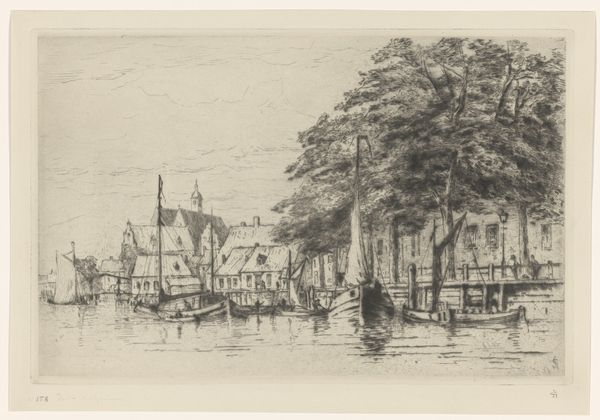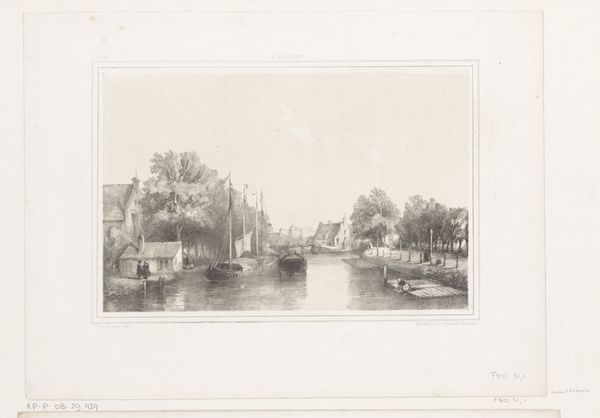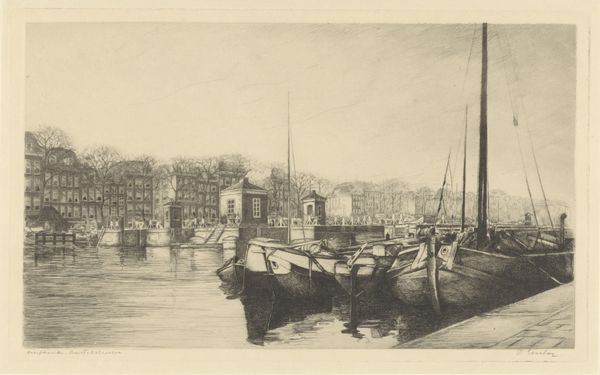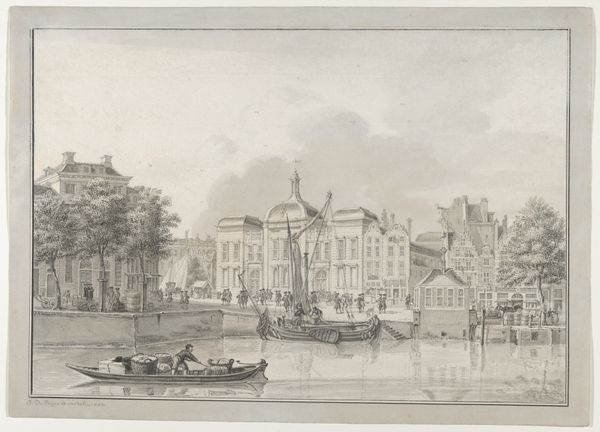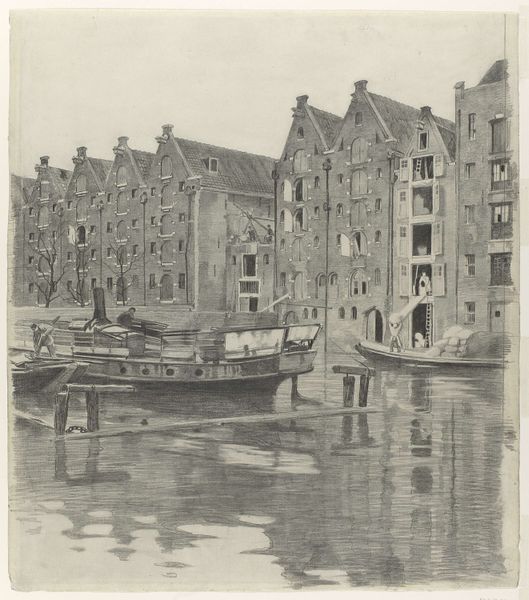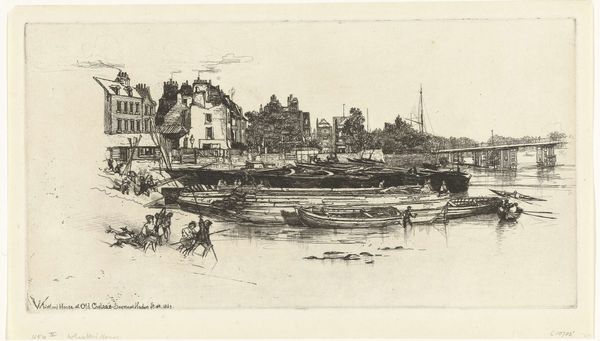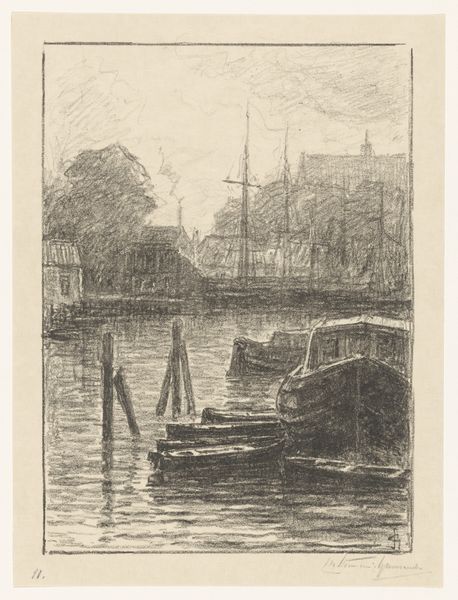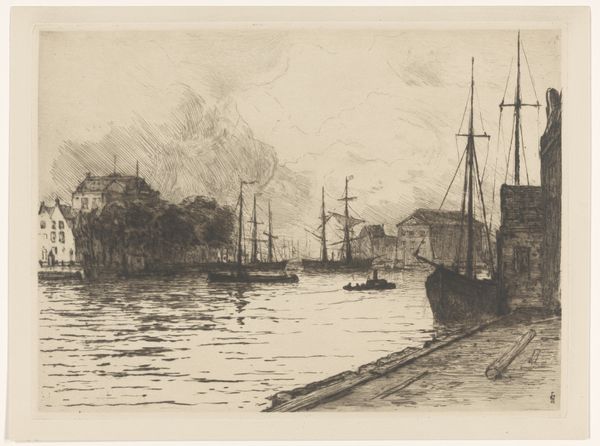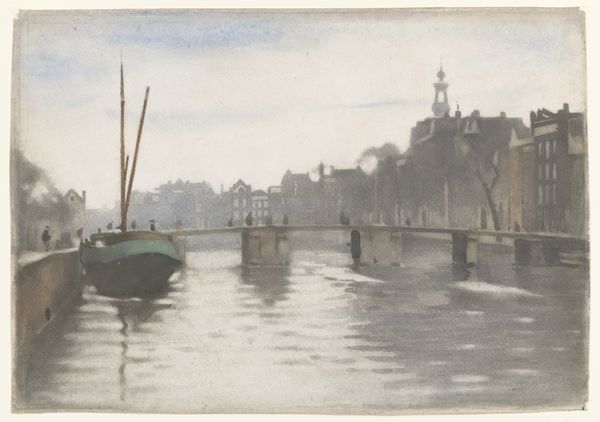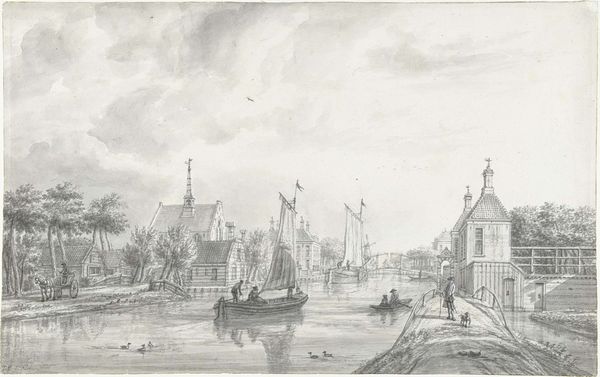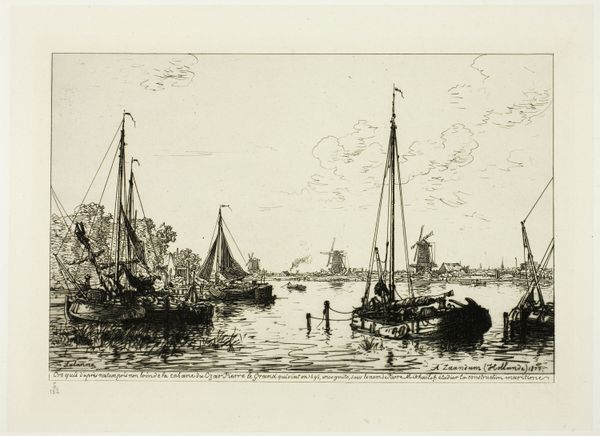
Dimensions: height 513 mm, width 584 mm
Copyright: Rijks Museum: Open Domain
Curator: Here we have "Bouwput op de Binnenkant" by Willem Witsen. It's difficult to pinpoint the exact creation date, somewhere between 1870 and 1923. This drawing offers a glimpse into Amsterdam's urban fabric. Editor: My first impression is quiet industry. The stillness of the water, the delicate rendering of the bare trees – yet the figures working, seemingly rebuilding… It's all beautifully captured with just a pencil. Curator: Exactly. It showcases Witsen’s engagement with Realism, focusing on everyday life but it also carries qualities that link him to the Impressionist movement. This pencil drawing becomes an important documentation of the city’s constant evolution. Editor: The drawing medium speaks volumes to me. Pencil on paper - immediate, accessible, yet capable of incredible detail. The variations in tone, achieved just through pressure and layering, give it depth that belie the humble materials. Think about the working-class having more access to such work. Curator: And how it reflects shifts in Amsterdam. We see a focus on labor—men literally reshaping the cityscape and points to changes in the late 19th century as Amsterdam grew as a port city. It becomes about the transformation of urban space and the lives that inhabit it. Editor: Indeed. Notice also how the water and its reflections dominate the lower half. It pulls our gaze downwards, literally grounding the image in the reality of the canals and waterways, the lifeblood of the city's material existence. Curator: Yes, and beyond the visible transformation, there’s a symbolic transformation occurring too. Old structures making way for new ones represents progress. Witsen places ordinary workers at the very heart of a transforming Amsterdam, not some heroic figure. Editor: I’m left with a sense of respect for both the labor depicted and Witsen's sensitive depiction of it using accessible materials. It’s a subtle reminder of the unseen labor that shapes our built environment. Curator: Absolutely, the drawing compels us to consider how physical changes inevitably echo into the social fabric, constantly reshaping identity. Editor: So even a simple pencil drawing speaks volumes about the world, about work, and about the evolution of art itself.
Comments
No comments
Be the first to comment and join the conversation on the ultimate creative platform.
